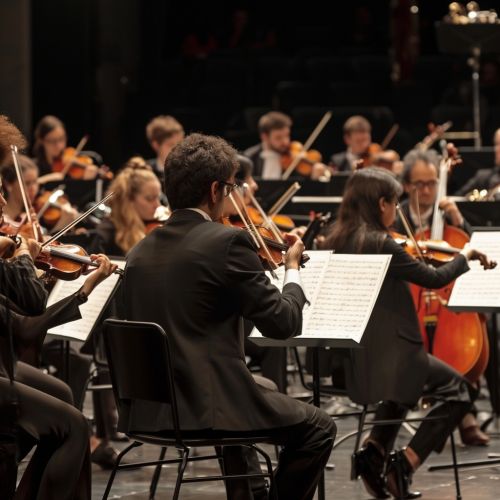Symphony in C
Overview
The Symphony in C is a musical composition in the key of C major. It is a type of symphony, a large-scale orchestral composition that typically consists of multiple movements. The Symphony in C is not a specific piece of music, but rather a category of symphonies written in this particular key.
Key of C Major
The key of C Major is often considered the most straightforward of all keys, as it does not contain any sharps or flats. This makes it a popular choice for many composers, especially those just starting out. However, its simplicity can also pose a challenge for more experienced composers, as it requires them to create interest and complexity without the aid of chromatic notes.
Structure of a Symphony
A typical symphony in C, like most symphonies, is structured in four movements. The first movement is usually fast and in sonata form, the second movement is slower and more lyrical, the third movement is a dance-like scherzo or minuet, and the final movement is fast and lively. Each movement is a separate entity, but they are all connected by thematic material and key relationships.
Notable Symphonies in C
Many notable composers have written symphonies in C. Some of the most famous examples include:
- Beethoven's Symphony No. 1 in C Major, Op. 21
- Mozart's Symphony No. 41 in C Major, K. 551, also known as the Jupiter Symphony
- Schubert's Symphony No. 9 in C Major, D. 944, also known as the Great C Major Symphony
- Stravinsky's Symphony in C

Analysis of a Symphony in C
Analyzing a symphony in C involves examining its form, harmonic structure, melodic content, and orchestration. The form of a symphony is typically divided into movements, each with its own distinct structure. The harmonic structure involves the key relationships and chord progressions used throughout the piece. The melodic content refers to the themes and motifs used, and the orchestration involves the specific instruments used and how they are combined.
Performance of a Symphony in C
Performing a symphony in C requires a large orchestra, typically including strings, woodwinds, brass, and percussion. The conductor leads the orchestra, interpreting the composer's intentions and guiding the musicians through the piece. The performance of a symphony is a complex and collaborative effort, requiring the skills and talents of many individuals.
